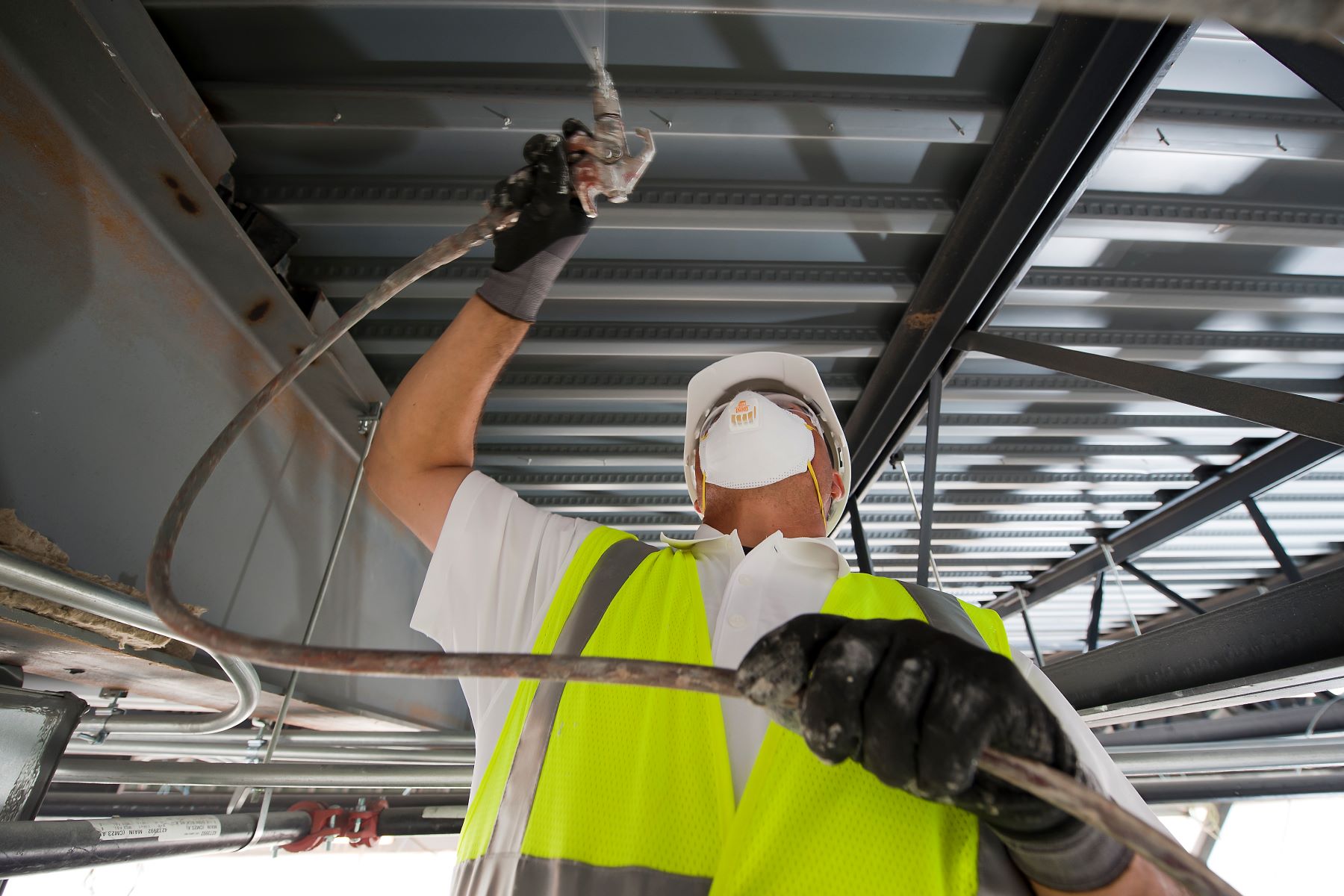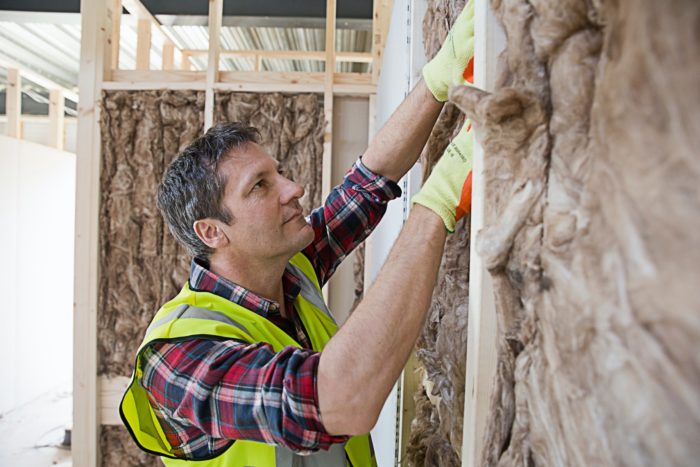Firestop and Fireproofing
Firestop and Fireproofing Installation

There are an average of 1.3 million fires and 3,000 fire-related deaths in the U.S. every year. Fire safety in homes and businesses can be improved with properly installed fire stopping and fire resistant products as well as functioning smoke detectors. Firestop products can be installed while building a structure, or they can be retrofitted to existing buildings.
Sprayed-applied firestopping products are often required in commercial buildings to prevent or delay damage in structures exposed to fire. These fire-resistant materials are intended to insulate the structure in the event of a fire, which can help significantly delay loss of the integrity of the structure. These materials and techniques can also be installed in homes to help delay severe structural damage in the event of a fire.
Similarly, firestop options can help make buildings safer for occupants in the event of a fire. Properly installed firestop helps extend the amount of time people have to safely evacuate a building. Installing fire and smoke barriers can also help reduce fire and smoke damage throughout a home or business.
Benefits of Fireproofing Services
Fireproofing services are designed to help increase the safety of a building in the case of a fire and to reduce the risk of fire-related structure failure. Fireproofing systems are installed to achieve compliance with state and local fire and building codes. Firestop products are meant to help reduce the spread of fire and smoke, potentially limiting losses in the unfortunate event that your home or business experiences a fire.
For commercial and multi-family residential buildings, a firestop system provides excellent fire resistance and can help reduce damage caused by fires. This state-of-the-art technology can help save lives and reduce property loss.
A high quality fire protection system provides passive fire protection that helps make your building safer and puts you and your tenants at ease. Fireproofing professionals can evaluate your home or building and recommend places where firestopping products can help. Whether you’re building from scratch or renovating an older home, there are a number of firestopping products available to fit your budget and needs.
Fireproof Building Design
Fireproof building design typically refers to the method of applying a fire-resistant coating to steel and other structural components of a building. This coating is typically spray-applied to steel, concrete, and even wood. It’s especially important on steel components, which can quickly lose their structural integrity when they reach high temperatures and can quickly make a building unsafe in a fire. Fire-resistant building components help protect the integrity of the building’s frame, preventing dangerous and costly collapse.
Fireproofing vs. Firestop: What’s the Difference?
Fireproofing refers to coatings applied to the building’s structural components. Firestop, on the other hand, is a method of filling holes in floor openings and wall joints to help prevent the spread of flames. Floors typically come with a firestop rating from 1 to 4, which indicates the number of hours it will take for the floor to burn. Sealing any holes helps maintain the fire rating of your floor after it is modified.
It’s important to understand this crucial difference between firestop and fireproofing, as one cannot stand in for the other. Firestop cannot be a replacement for fireproofing your building. Firestop is a method of sealing gaps between fire-resistant materials, helping reduce fire and smoke spread.
Residential Fireproofing
Unless you’re undergoing a large renovation or building your home from the ground up, fireproofing your home is likely not an option. Residential fireproofing installation requires access to wall interiors and the internal structure of your home. Typically, homeowners install fire resistant insulation such as mineral wool or fiberglass and seal gaps or holes in their floors and walls to prevent the spread of fire and smoke. These are passive forms of fire prevention, which should be used in conjunction with active and preventative measures like smoke detectors, extinguishers, and fire-safe home practices.
Fireproofing Installation Services Near You
When you are looking for fireproofing services or firestop installation for your home or business, you need a strategic ally that understands the importance of quality, budgets, schedules, and overall customer satisfaction. With local installers who are dedicated to safety, TruTeam is the fireproofing contractor for you.
Our fireproofing contractors specialize in the selection and installation of the appropriate firestop and smoke seal systems for new and retrofit projects. We offer professional installation and extensive knowledge of firestop systems for every builder and homeowner. With our joint and penetration firestop expertise and professional installation, we offer peace of mind and confidence in your firestop assembly.
Contact your local TruTeam location to speak with one of our knowledgeable sales consultants to receive your free fireproofing quote.
Ready to get started? Get a contractor you can trust. Contact your local TruTeam branch today for all your installation needs.
The Team You Can Trust
Get Your Quote


Installers
Types of Fireproofing
Cementitious
The sprayed-on material used in fireproofing is typically cementitious, meaning “cement-like,” and is gypsum based. It’s sprayed onto steel or other internal building structures and has a stucco-like appearance. In case of fire, cementitious fireproofing keeps the temperature of the steel beneath it lower than 540 degrees celsius, which is the point at which steel loses its strength.
Intumescent
The intumescent form of fireproofing material comes in the form of a painted-on coating. This special coating is designed to char and expand when heated, creating a barrier over building components that slows the heating of steel. Intumescent paint is easier to apply than cementitious fireproofing and can be applied in several layers to improve fire resistance.
Firestop
Firestop is a method of sealing gaps and holes in buildings using cementitious, silicone, or mortar-based materials. Think of firestopping installation as a “patch” or filler for gaps that exist in a fire-resistant system. Firestop is commonly installed around penetrations such as piping, electrical, joints, and junctions to ensure a full seal.


